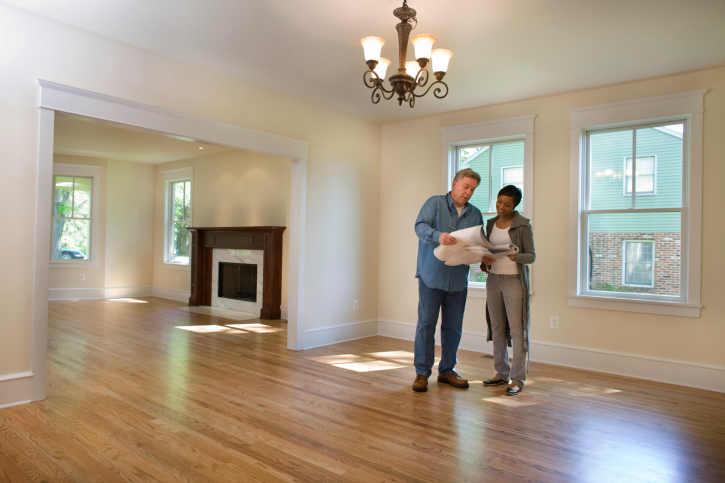Home Improvements: Avoiding Litigation While Getting the Job Done

If you plan to do a home improvement project, creating that dwelling of your dreams there will certainly be enough on your mind without having to worry about the legal issues that can arise when dealing with everything from contractor licensing and deadlines to permits and personal injury. Here is your reference guide to avoid litigation while getting the job done:
Materials and Specifications
Vague instructions will result in missed expectations. A construction contract must detail the precise quality of materials (i.e. make and model number) to be utilized. To illustrate, calling for hardwood floors is not enough nor is calling for oak hardwood floors. Instead, the grade of that hardwood should be material to the contract and a failure to set forth your expectations in your construction contract will result in your expectations being missed, with fighting to ensue.
Change Orders
A change order refers to a modification to the scope of work that was first agreed upon by the homeowner and the contractor. Such a change order will change the cost of the project and the completion date. Many times these change orders are agreed to verbally and off the cuff, frequently resulting in litigation. Change orders should be agreed upon by following a predetermined procedure that is called for in the construction contract. Remember, a change order is a modification to your contract.
Deadlines and Consequential Damages
Most contractors utilize a standard AIA (American Institute of Architects) Contract in their dealings. This contract waives all claims by homeowners for loss of use as a consequence of a contractor’s missed construction deadlines. So, owners should either renegotiate this key term by way of what is called a liquidated damages clause (i.e. a predetermined sum of damages per day for missed deadlines) or they should instead purchase adequate insurance (i.e. loss of use coverage) in order to afford the cost of suitable alternative housing rental expenses (i.e. hotel) or to provide lost profits if it’s a rental property.
Contractor Licensing
Suffolk County requires (Code Chapter 563) licensing for all home improvement contractors. In the Townships of Southampton (Code Chapter 143), East Hampton (Code Chapter 156) and Shelter Island (Code Chapter 79) the Suffolk County license requirement is inapplicable, but, instead, there are town specific licenses that are required. Make sure your home improvement contractor is licensed prior to starting the job. When unlicensed, courts will not enforce a contractor’s claim for payments called for under the construction contract for work performed, nor is a mechanic’s lien available.
Permits and Certificate of Occupancy (CO)
Before work begins, make sure a building permit is obtained. Municipal (town/village) codes broadly result in architects, contractors, surveyors, tenants, lessees, owners and agents all facing liability for the failure to obtain such a permit. Additionally, and upon completion of a project, ensure that a new Certificate of Occupancy (a.k.a. Certificate of Compliance) is issued by the municipality, which certifies that the construction was completed in conformity with local laws. Beyond fines, one can face jail time for failure to obtain both a permit and a new CO. Additionally, municipalities often require that construction violating its code be corrected or abated (think teardown).
Contractual Statutory Requirements
New York Law (General Business Law § 771) requires home improvement contracts to be in writing and signed by all parties. Additionally, the name, address, telephone number and license number of the contractor are required. The law also deals with such topics as progress payments, statutory cancellation rights, lien law notices, project schedules and much more. Make sure your contract complies with the statute.
Workers’ Personal Injuries
New York Law (Labor Law § 200, 240 & 241) places a nondelegable duty on owners to provide proper protection for worker safety at construction sites. However, one- and two-family-home owners are exempted from this liability so long as they do not direct or control the work. Homeowners wishing to avoid liability should not supervise the method or manner of the work and should instead limit their involvement at the project to only instructions about aesthetic design and the provision of general supervision. Nonetheless, rental properties are not so exempt from liability and consequently rental property owners can and should be intimately involved in the construction project to mitigate liability exposure.
Mechanic’s Liens
Those who furnish labor and/or materials to a construction project have a right to file a mechanic’s lien with respect to their payment for such labor and/or materials. A mechanic’s lien renders the sale of a home generally unavailable (it’s unmarketable) and the lien also enables the lienor to institute a foreclosure proceeding on the property to force payment. Also, no provision in a construction contract can waive this right of a contractor, subcontractor or materialman to file and foreclose upon a mechanic’s lien, as the same is void as against public policy under New York law (Lien Law § 34).
Allocating Responsibility
New York law (General Obligations Law § 5-322.1) voids any construction contract that indemnifies or holds harmless a party for his own acts of negligence (i.e. can’t require contractor to hold owner harmless for injuries to persons or require subcontractor to hold general contractor harmless for such injuries). However, requiring the procurement of insurance coverage is permissible. So, homeowners should negotiate being named as an additional insured to a contractor’s general liability insurance coverage in order to mitigate exposure (i.e. think subcontractor slipping on wet floor).
Adequate Insurance Coverage
General liability insurance provides coverage for accidental occurrence of bodily injury or property damage incident to the construction project. Yet, such a policy typically excludes coverage for faulty workmanship, negligent professional design services and property damage that occurs once the job is completed. What about the contractor going bankrupt and being unable to pay subcontractors? How about environmental pollutants requiring modifications to the scope of the project or substantial delay? It’s imperative that a homeowner understands the insurance provided, its occurrence limits, deductible and exclusions prior to retaining a contractor to start construction.
Andrew M. Lieb, Esq., MPH, is the Managing Attorney of Lieb at Law P.C. and is a contributing writer for Behind the Hedges: Inside Hamptons Real Estate.









